Home>Garden Essentials>Garden Plants>What Goes Well With Thyme
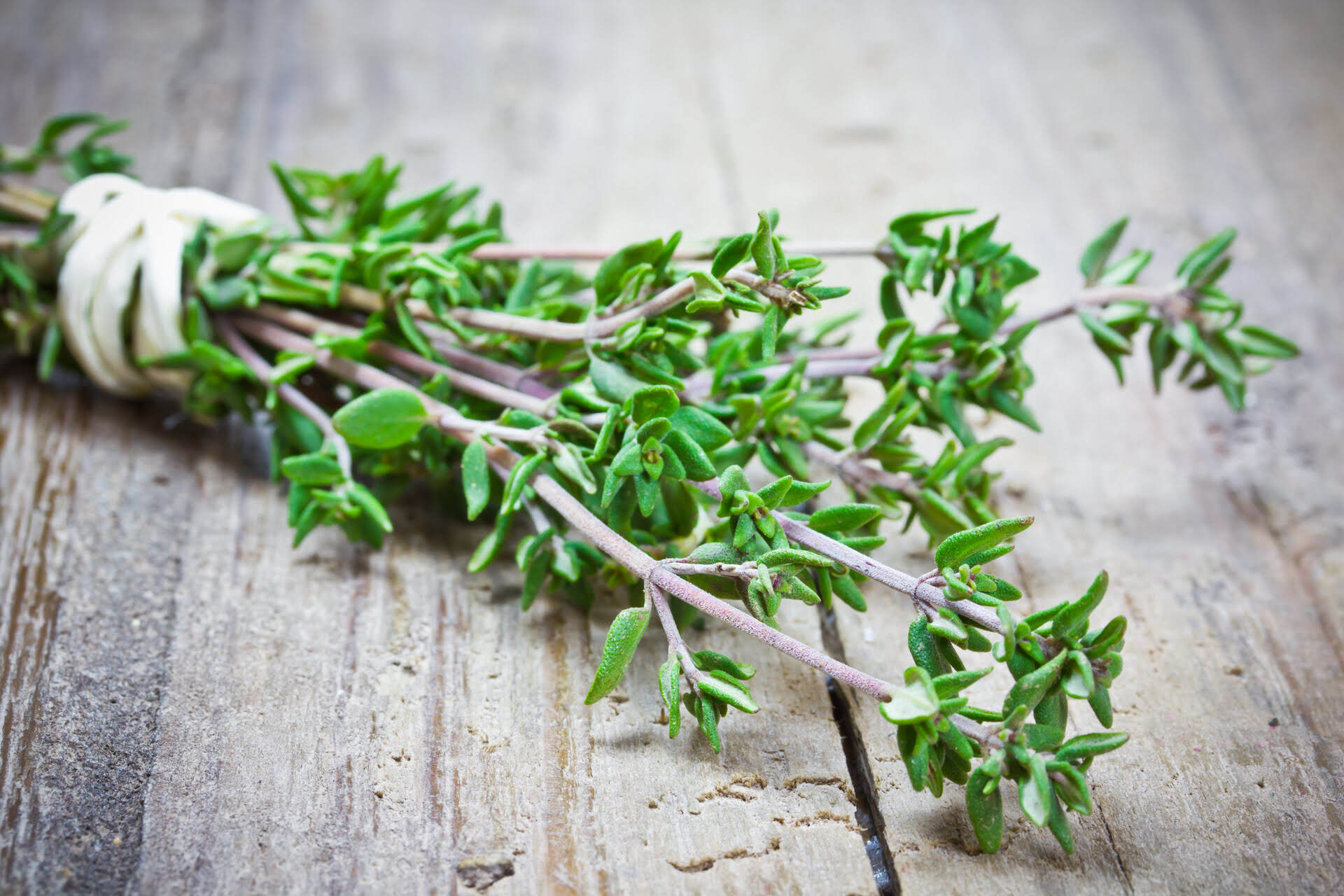

Garden Plants
What Goes Well With Thyme
Modified: January 5, 2024
Discover the perfect plants to pair with thyme for a harmonious garden. Enhance the flavor of your dishes while enjoying the beauty of complementary plantings.
(Many of the links in this article redirect to a specific reviewed product. Your purchase of these products through affiliate links helps to generate commission for Storables.com, at no extra cost. Learn more)
Introduction
Thyme is a versatile and aromatic herb that has been used for centuries in both culinary and medicinal applications. With its pleasant aroma and robust flavor, thyme adds depth and complexity to a variety of dishes. But what exactly goes well with thyme? In this article, we will explore the many benefits of thyme and discover the perfect pairings for this herb.
Thyme is not just a flavorful addition to your meals; it is also packed with health benefits. It contains high levels of antioxidants and anti-inflammatory properties, which are known to boost the immune system and promote overall well-being. Thyme is also rich in vitamins and minerals, including vitamin C, vitamin A, iron, and manganese.
When it comes to culinary uses, thyme is incredibly versatile, adding a distinctive flavor to both savory and sweet dishes. Its earthy and slightly minty taste complements a wide range of ingredients, making it a popular choice among home cooks and professional chefs alike.
Whether you’re preparing a hearty roast, a fresh salad, or a comforting soup, thyme can elevate the flavors and create a memorable dining experience. Let’s dive deeper into the specific pairings that work wonderfully with thyme.
Key Takeaways:
- Thyme is a versatile herb that not only enhances the flavor of dishes but also offers numerous health benefits, making it a valuable addition to a balanced diet.
- From vegetables and meats to desserts and beverages, thyme adds a delightful twist, transforming ordinary meals into extraordinary culinary experiences.
Read more: What Spices Go Well With Thyme
Benefits of Thyme
Thyme is not only a delicious herb but also offers numerous health benefits. Here are some of the key advantages of incorporating thyme into your diet:
- Antioxidant-rich: Thyme contains high levels of antioxidants, which help protect the body against damage caused by free radicals. These antioxidants can help reduce inflammation, lower the risk of chronic diseases, and promote overall health.
- Boosts the immune system: Thyme is packed with vitamins and minerals that support a healthy immune system. It is particularly rich in vitamin C, which is essential for promoting the production and function of white blood cells that defend the body against infections and illnesses.
- Anti-inflammatory properties: The compounds found in thyme have anti-inflammatory properties that can help reduce inflammation in the body. This can be beneficial for individuals with conditions such as arthritis or inflammatory bowel disease.
- Respiratory health: Thyme is often used to help alleviate respiratory issues such as coughs, bronchitis, and congestion. It contains compounds that can help relax the muscles of the respiratory tract and promote easier breathing.
- Digestive aid: Thyme has been used traditionally to support digestion. It can help stimulate the production of digestive enzymes, aiding in the breakdown of food and supporting optimal digestion.
- Anti-microbial properties: Thyme has natural anti-microbial properties that help fight against bacteria and fungi. It has been used for centuries to treat infections and can be used topically or internally to help combat harmful pathogens.
Incorporating thyme into your meals not only enhances the flavor profiles but also provides a range of health benefits. Now that we’ve explored the advantages of thyme, let’s delve into the various culinary uses and pairings for this remarkable herb.
Culinary Uses of Thyme
Thyme is a versatile herb that can be used in a wide range of culinary applications. Its distinctive flavor and aroma add depth and complexity to dishes, making it a staple in many kitchens. Here are some popular culinary uses of thyme:
- Seasoning: Thyme is commonly used as a seasoning for meats, vegetables, soups, and stews. Its earthy and slightly minty flavor enhances the overall taste of dishes, adding a unique and delightful dimension.
- Marinades and rubs: The flavor of thyme pairs exceptionally well with meat and poultry. It can be used in marinades and rubs, infusing the meat with its distinct aroma and creating a delicious flavor profile.
- Infused oils and vinegars: Thyme-infused oils and vinegars are a great way to preserve the flavor of thyme and add it to various dishes. Use these infusions in salad dressings, marinades, or drizzle them over roasted vegetables for an extra burst of flavor.
- Herb butter: Blend thyme with softened butter to create a tasty herb butter that can be used to enhance the flavor of grilled meats, steaks, or even spread onto freshly baked bread.
- Herb blends and seasoning mixes: Thyme is often included in herb blends and seasoning mixes, such as herbes de Provence. These blends can be used to season roasted meats, vegetables, or even sprinkled over popcorn for a savory snack.
- Baking: Thyme can also be incorporated into baked goods to add an unexpected twist. It pairs well with flavors like lemon, honey, and even chocolate. Try adding a sprinkle of thyme to your next batch of biscuits, bread, or cookies for a unique flavor.
- Herbal teas and beverages: Thyme can be used to make flavorful herbal teas by steeping the sprigs in hot water. It can also be added to cocktails, mocktails, and infused waters to add a refreshing and aromatic element.
These are just a few of the culinary uses of thyme, and the possibilities are endless. Experiment with incorporating thyme into your favorite recipes and explore the delightful flavors it brings to your dishes. Now, let’s explore the perfect pairings for thyme with different types of ingredients.
Pairing Thyme with Vegetables
Thyme pairs exceptionally well with a variety of vegetables, adding a depth of flavor and aroma to your dishes. Here are some delicious pairings to consider:
- Roasted potatoes: Thyme and potatoes are a classic combination. Toss quartered potatoes with olive oil, minced garlic, salt, pepper, and fresh thyme leaves. Roast until golden and crispy for a mouthwatering side dish.
- Roasted carrots: Add a touch of thyme to roasted carrots for a flavorful twist. Toss whole baby carrots with olive oil, thyme leaves, salt, and pepper. Roast until tender and caramelized for a sweet and savory side dish.
- Sautéed mushrooms: Thyme enhances the earthy flavor of mushrooms. Sauté sliced mushrooms in butter or olive oil with garlic and thyme until golden brown. Add them to pasta dishes, omelets, or serve as a side dish.
- Ratatouille: Thyme is a key ingredient in the traditional French dish, ratatouille. Combine diced eggplant, zucchini, bell peppers, tomatoes, onions, garlic, and thyme in a pot. Simmer until all the flavors meld together into a flavorful vegetable medley.
- Grilled asparagus: Brush asparagus spears with olive oil and sprinkle with salt, pepper, and fresh thyme leaves. Grill until lightly charred and tender for a delicious side dish packed with flavor.
- Herbed vegetable soup: Add thyme to your favorite vegetable soup recipe to add depth and complexity to the flavors. The herb pairs well with a variety of vegetables, such as carrots, celery, onions, and potatoes.
- Roasted butternut squash: Toss cubed butternut squash with olive oil, salt, pepper, and thyme leaves. Roast until tender and caramelized for a sweet and savory side dish or a tasty addition to salads and grain bowls.
- Charred Brussels sprouts: Trim and halve Brussels sprouts, then toss them with olive oil, salt, pepper, and thyme. Roast or pan-sear until charred and tender, then finish with a sprinkle of fresh thyme leaves for added flavor.
These are just a few examples of how you can pair thyme with vegetables. Feel free to experiment and find your own favorite combinations. Thyme adds a delightful aroma and taste to a wide range of vegetable dishes, making them more flavorful and enjoyable. Next, let’s explore how thyme can complement various meat and poultry dishes.
Pairing Thyme with Meat and Poultry
Thyme is a versatile herb that pairs exceptionally well with various types of meat and poultry, enhancing their flavor profiles. Here are some delicious pairings to consider:
- Roast chicken: Rub a whole chicken with a mixture of melted butter, minced garlic, thyme leaves, salt, and pepper before roasting. The thyme adds a savory and aromatic element to the chicken, creating a mouthwatering dish.
- Braised beef: Add thyme to a beef stew or pot roast for added depth of flavor. The herb complements the richness of the beef and adds a delightful earthy note to the dish.
- Lamb chops: Marinate lamb chops with olive oil, minced garlic, thyme leaves, salt, and pepper. Grill or pan-sear until cooked to your desired doneness for a succulent and flavorful meal.
- Pork tenderloin: Season pork tenderloin with a blend of thyme, garlic powder, onion powder, salt, and pepper. Roast or grill until cooked through for a tender and flavorful pork dish.
- Grilled steak: Rub steaks with a mixture of olive oil, minced garlic, thyme leaves, salt, and pepper. Grill to your preferred level of doneness for a perfectly seasoned and fragrant steak.
- Herb-crusted rack of lamb: Coat a rack of lamb with a mix of breadcrumbs, thyme, minced garlic, salt, and pepper. Roast until the crust is golden brown and the meat is cooked to perfection for an elegant and delicious dish.
- Herb-stuffed turkey: Create a flavorful herb stuffing for your Thanksgiving turkey by combining breadcrumbs, minced garlic, thyme, sage, rosemary, salt, pepper, and melted butter. Stuff the turkey cavity with the mixture before roasting for a fragrant and savory main course.
- Grilled pork chops: Marinate pork chops with a blend of thyme, lemon juice, olive oil, minced garlic, salt, and pepper. Grill until cooked through for juicy and flavorful chops.
Thyme adds a wonderful and aromatic flavor to meat and poultry dishes, making them more enticing and delicious. Feel free to adjust the quantity of thyme based on your taste preferences, and don’t be afraid to experiment with different cuts of meat and poultry. Next, let’s explore how thyme pairs with fish and seafood.
Read more: What Goes Well With Pampas Grass
Pairing Thyme with Fish and Seafood
Thyme adds a delightful herbal note to fish and seafood dishes, enhancing their flavors and creating a tantalizing culinary experience. Here are some fantastic pairings to try:
- Baked salmon: Place salmon fillets on a baking sheet and top them with a mixture of olive oil, minced garlic, thyme leaves, lemon zest, salt, and pepper. Bake until the salmon is cooked through for a fragrant and succulent dish.
- Grilled shrimp skewers: Skewer marinated shrimp and grill them to perfection. Create a marinade with thyme, lemon juice, olive oil, minced garlic, salt, and pepper for a burst of flavor in every bite.
- Seared scallops: Sear scallops in a hot skillet with butter or olive oil, and finish them with a sprinkle of fresh thyme leaves. The thyme complements the delicate sweetness of the scallops, enhancing their natural flavors.
- Herb-crusted cod: Coat cod fillets with a mixture of breadcrumbs, thyme, minced garlic, lemon zest, salt, and pepper. Bake until the crust is golden brown and the fish is cooked through for a crispy and flavorful dish.
- Grilled swordfish: Season swordfish steaks with a blend of thyme, paprika, minced garlic, salt, and pepper. Grill until cooked through for a hearty and savory fish dish.
- Herb-marinated tuna: Marinate fresh tuna steaks with a mixture of thyme, soy sauce, minced garlic, lemon juice, honey, salt, and pepper. Grill or sear to your desired level of doneness for a robust and flavorful dish.
- Clam chowder: Add thyme to homemade clam chowder for a fragrant and savory flavor. The herb complements the briny taste of the clams and adds depth to the creamy broth.
- Lemon herb shrimp pasta: Toss cooked pasta with sautéed shrimp, lemon juice, olive oil, minced garlic, thyme leaves, salt, and pepper. The thyme adds a refreshing and aromatic note to the dish, balancing the acidity of the lemon.
Thyme brings a wonderful herbal element to fish and seafood dishes, enhancing their flavors and creating a memorable dining experience. Don’t hesitate to explore different recipes and cooking techniques to find your favorite thyme-infused seafood creations. Next, let’s explore how thyme can be used in baking and desserts.
Thyme pairs well with roasted vegetables, grilled meats, soups, and stews. It also complements flavors of garlic, lemon, and olive oil.
Thyme in Baking and Desserts
While thyme is commonly associated with savory dishes, it can also add a unique and unexpected twist to your baking and desserts. Here are some delightful ways to incorporate thyme into your sweet treats:
- Lemon thyme shortbread cookies: Add a fresh twist to classic shortbread cookies by mixing in chopped thyme leaves and lemon zest into the dough. The combination of the buttery cookie and the herbal notes of thyme creates a delightful treat.
- Thyme-infused honey: Combine honey and thyme sprigs in a jar and let it infuse for a few days. Drizzle the thyme-infused honey over yogurt, pancakes, or fresh fruit for a sweet and herbal flavor.
- Thyme-infused ice cream: Add thyme sprigs to warm milk and let it steep for about 30 minutes. Use the infused milk to make a custard base for ice cream, then churn it to create a unique and refreshing thyme-infused ice cream.
- Thyme and berry tart: Make a tart or tartlets filled with a combination of fresh berries and a sprinkle of thyme leaves. The thyme adds an earthy and aromatic note that pairs beautifully with the sweetness of the berries.
- Thyme and lemon cake: Add finely chopped thyme leaves to your favorite lemon cake recipe for an unexpected and delightful flavor twist. The herbal notes of thyme complement the zesty and tangy taste of lemon perfectly.
- Thyme-infused syrup: Make a simple syrup by simmering equal parts water and sugar with thyme sprigs until the sugar dissolves. Remove the sprigs and use the thyme-infused syrup to drizzle over cakes, pancakes, or mix into cocktails and mocktails.
- Thyme-infused fruit compote: Simmer fresh or frozen fruits with a little sugar, lemon juice, and thyme sprigs until the fruits break down and create a thickened compote. Serve the thyme-infused compote over pancakes, waffles, or as a topping for yogurt and ice cream.
- Thyme and honey roasted nuts: Toss mixed nuts with melted butter, honey, thyme leaves, and a pinch of salt. Roast in the oven until golden brown and fragrant for a tasty and herb-infused snack or dessert topping.
These are just a few ways to incorporate thyme into your baking and desserts. The herb adds a unique and flavorful touch that will surprise and delight your taste buds. Feel free to experiment and create your own thyme-infused sweet treats. Now, let’s move on to explore how thyme can be used in beverages.
Thyme in Beverages
Thyme is not just limited to culinary applications. It also adds a delightful twist to various beverages, imparting its herbal and aromatic flavors. Here are some refreshing and enticing ways to enjoy thyme in your drinks:
- Thyme-infused lemonade: Add a few sprigs of thyme to homemade lemonade for a unique and refreshing twist. The thyme adds an herbal note that complements the tangy sweetness of the lemon, creating a delightful and aromatic beverage.
- Thyme iced tea: Brew your favorite tea, such as green tea or black tea, and add a couple of sprigs of thyme while it is steeping. Once cooled, serve the iced tea over ice with a sprig of fresh thyme for a refreshing herbal drink.
- Citrus and thyme mocktail: Mix freshly squeezed citrus juices, such as orange, grapefruit, and lime, with a thyme-infused simple syrup. Add a splash of sparkling water and garnish with a sprig of thyme for a mocktail that is both refreshing and aromatic.
- Thyme-infused cocktails: Incorporate thyme into your favorite cocktails for a unique flavor twist. Muddle thyme leaves with other ingredients, such as fruits or sugar, to release its aromatic oils. Mix with spirits like vodka, gin, or rum to create a herbal and refreshing cocktail.
- Thyme-infused infused waters: Add a few sprigs of thyme to a pitcher of water along with sliced fruits, such as strawberries or citrus slices, for a refreshing and flavorful infused water. Let it steep in the refrigerator for a few hours before serving.
- Thyme and berry smoothie: Blend together fresh or frozen berries, yogurt, a splash of fruit juice, and a few sprigs of thyme for a delicious and antioxidant-rich smoothie. The thyme adds an herbal note that complements the sweetness of the berries.
- Thyme hot chocolate: Infuse thyme in warm milk and use it to make a rich and creamy hot chocolate. The herbal notes from the thyme add an interesting twist to the classic hot cocoa.
- Thyme-infused gin and tonic: Add a sprig or two of thyme to your gin and tonic for a unique and herbaceous twist. The thyme complements the botanical flavors in the gin, adding depth and complexity to the cocktail.
These are just a few ways to incorporate thyme into your beverages. Feel free to experiment with different combinations and ratios to create your own thyme-infused drinks. The herbal and aromatic flavors of thyme add a delightful complexity to your beverages, making them more interesting and enjoyable. Now, let’s explore another fascinating use of thyme – in infused oils and vinegars.
Thyme in Infused Oils and Vinegars
Thyme-infused oils and vinegars are a fantastic way to preserve the flavor and aroma of thyme, while also adding a unique twist to your dishes. Here’s how you can create thyme-infused oils and vinegars:
- Thyme-infused olive oil: Combine fresh thyme sprigs with extra virgin olive oil in a sterilized glass jar. Let it sit in a cool, dark place for about a week to allow the flavors to infuse. Strain out the thyme sprigs and transfer the oil into a bottle for easy use. Thyme-infused olive oil is perfect for drizzling over vegetables, pasta, bread, or using as a flavorful base for dressings and marinades.
- Thyme-infused vinegar: Place fresh thyme sprigs in a sterilized glass bottle and fill it with your choice of vinegar, such as white wine vinegar or apple cider vinegar. Seal the bottle tightly and store it in a cool, dark place for a couple of weeks to let the flavors infuse. The thyme-infused vinegar can be used to make dressings, marinades, or for flavoring sauces and soups.
- Herb-infused flavored salts: Combine salt, fresh thyme leaves, and zest from citrus fruits like lemon or orange. Mix thoroughly and spread the mixture on a baking sheet to air dry. Once dry, store the herb-infused flavored salt in an airtight container. This thyme-infused flavored salt can be used as a finishing touch on roasted vegetables, grilled meats, or even sprinkled on popcorn for a savory snack.
- Thyme-infused honey vinegar: Mix honey and thyme sprigs in a glass bottle and let it infuse for a few weeks. The result is a unique and flavorful thyme-infused honey vinegar. Use it to dress salads, marinate meats, or drizzle over roasted vegetables for a sweet and tangy touch.
- Thyme-infused balsamic glaze: In a small saucepan, combine balsamic vinegar, honey, and a few sprigs of thyme. Simmer the mixture over low heat until it reduces and thickens into a glaze-like consistency. Remove the thyme sprigs and cool the glaze before using it as a drizzle over salads, roasted vegetables, or grilled meats.
- Thyme-infused herb butter: Soften butter and blend it with chopped thyme leaves. Roll the herb-infused butter into a log using plastic wrap and refrigerate until firm. The thyme-infused herb butter can be used to add flavor and richness to steaks, roasted vegetables, or spread onto fresh bread.
Infusing oils and vinegars with thyme allows you to enjoy the herb’s flavors and aromas in various dishes. These thyme-infused condiments add a unique twist to your culinary creations, elevating the taste profile of your meals. Now, let’s explore how thyme can be used in soups and sauces.
Read more: What Greenery Goes Well With Baby’s Breath
Thyme in Soups and Sauces
Thyme is a versatile herb that adds depth and complexity to soups and sauces. Its earthy and aromatic flavor enhances the taste profiles of various dishes. Here are some delicious ways to incorporate thyme into your soups and sauces:
- Tomato and thyme soup: Sauté onions, garlic, and fresh thyme in olive oil until fragrant. Add diced tomatoes, vegetable or chicken broth, and simmer until the flavors meld together. Puree the soup until smooth and creamy, and finish with a sprinkle of fresh thyme leaves for a comforting and flavorful bowl of soup.
- Creamy mushroom and thyme soup: Sautée mushrooms, onions, and thyme in butter until the mushrooms are golden brown and fragrant. Add vegetable or chicken broth and simmer until the flavors meld together. Finish the soup by stirring in cream and garnishing with fresh thyme leaves for a rich and satisfying soup.
- Béchamel sauce: Infuse thyme in warm milk and use it as the base for a creamy béchamel sauce. Melt butter, whisk in flour, and cook until golden. Slowly add the thyme-infused milk while whisking continuously until the sauce thickens. Season with salt, pepper, and a sprinkle of fresh thyme leaves. Béchamel sauce is a versatile base for various dishes, such as lasagna, gratins, or pasta bakes.
- Marsala mushroom sauce: Sauté mushrooms, onions, and minced garlic in butter until the mushrooms are tender. Deglaze the pan with Marsala wine and simmer until the liquid reduces. Stir in thyme leaves, heavy cream, and season with salt and pepper. Serve the mushroom sauce over grilled meats or roasted vegetables for a delicious and creamy accompaniment.
- Lemon-thyme vinaigrette: Whisk together fresh lemon juice, Dijon mustard, honey, thyme leaves, garlic, salt, pepper, and olive oil for a tangy and aromatic vinaigrette. Drizzle the vinaigrette over salads, roasted vegetables, or grilled meats to add brightness and flavor.
- Red wine reduction sauce: In a saucepan, simmer red wine, thyme sprigs, minced garlic, and beef or vegetable broth until the liquid reduces and thickens into a flavorful sauce. Strain out the thyme sprigs and serve the red wine reduction sauce over grilled steaks, roasted potatoes, or other hearty dishes.
- Herbed tomato sauce: Sauté onions, garlic, and thyme in olive oil until fragrant. Add crushed tomatoes, tomato paste, and simmer until the flavors meld together. Season with salt, pepper, and a pinch of sugar to balance the acidity. This herbed tomato sauce is perfect for pasta dishes, pizzas, or as a base for other sauces and stews.
- Thyme-infused gravy: Use thyme-infused broth or pan drippings to make a flavorful and aromatic gravy. Simmer the broth or pan drippings with a roux made from butter and flour until thickened. Season to taste with salt, pepper, and a sprinkle of fresh thyme leaves. Serve the thyme-infused gravy over meats, mashed potatoes, or stuffing for a comforting and flavorful addition to your meal.
Thyme adds a wonderful depth of flavor to soups and sauces, whether it’s a creamy soup, a rich sauce, or a tangy vinaigrette. Experiment with these recipes or incorporate thyme into your own favorite soup and sauce creations. Now, let’s wrap up our exploration of thyme’s versatility.
Conclusion
Thyme, with its robust flavor and aromatic notes, is a herb that greatly enhances the taste and aroma of various dishes. From vegetables and meats to fish and desserts, thyme adds a delightful twist, transforming ordinary meals into extraordinary culinary experiences.
Not only does thyme contribute to the flavor profiles of dishes, but it also offers numerous health benefits. Its antioxidant and anti-inflammatory properties, along with its rich vitamin and mineral content, make thyme a valuable addition to a balanced diet.
Whether you’re seasoning roasted vegetables, marinating meats, infusing oils and vinegars, or adding a unique touch to beverages and desserts, thyme brings a distinct and delicious dimension to your culinary creations.
By exploring the pairings of thyme with different ingredients, you have unlocked a world of culinary possibilities. Feel free to experiment, adjust quantities, and discover your own favorite combinations. Let your creativity soar as you bring out the best in thyme-imbued dishes.
So next time you’re in the kitchen, don’t forget to reach for thyme. This versatile herb will elevate your cooking to new heights, delighting your taste buds and impressing your guests. Embrace the aroma, savor the flavors, and enjoy the incredible journey that thyme takes you on in the world of gastronomy.
Remember, whether you’re a seasoned chef or an enthusiastic home cook, thyme is a herb that truly goes well with just about anything!
Frequently Asked Questions about What Goes Well With Thyme
Was this page helpful?
At Storables.com, we guarantee accurate and reliable information. Our content, validated by Expert Board Contributors, is crafted following stringent Editorial Policies. We're committed to providing you with well-researched, expert-backed insights for all your informational needs.





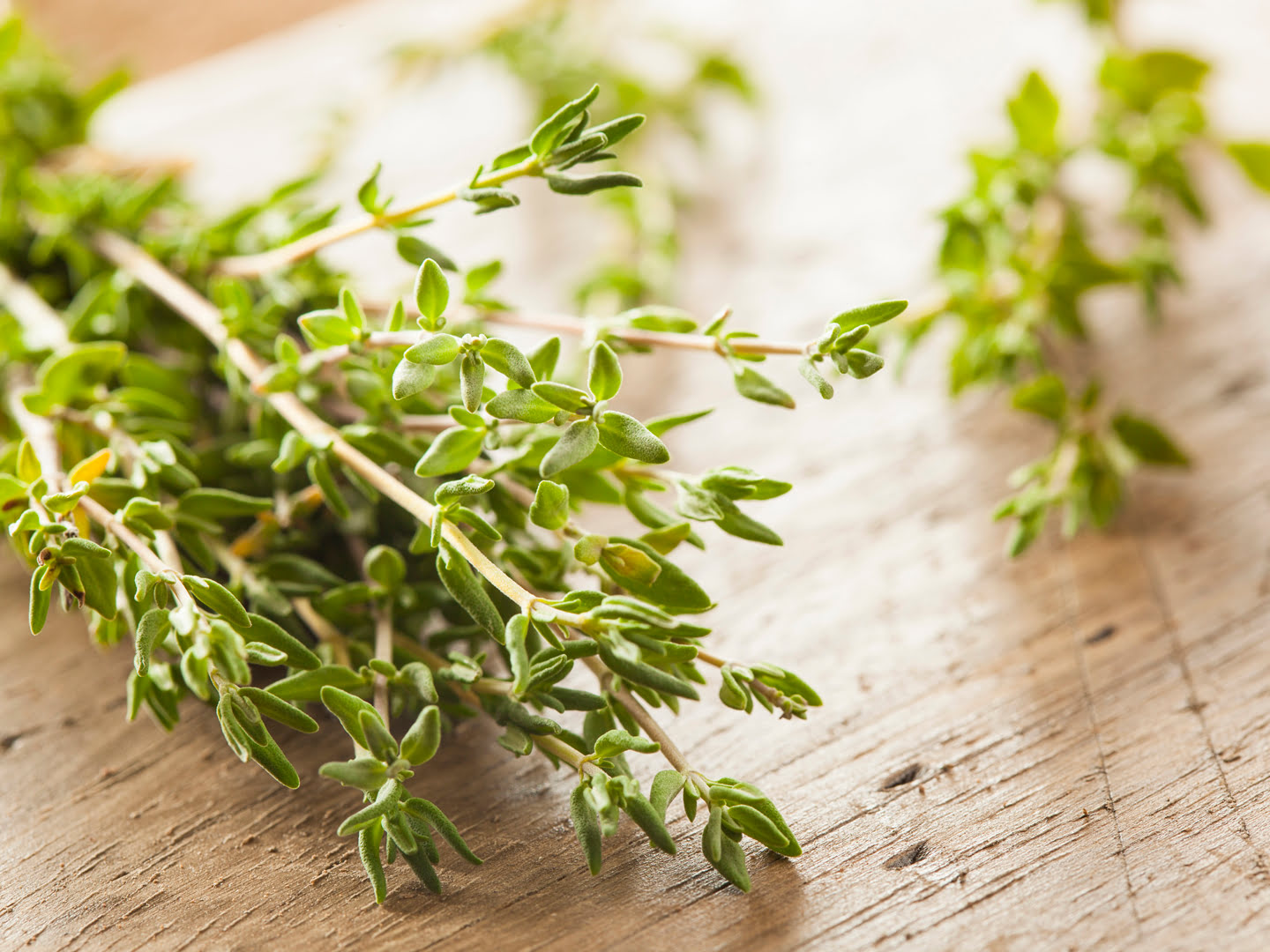
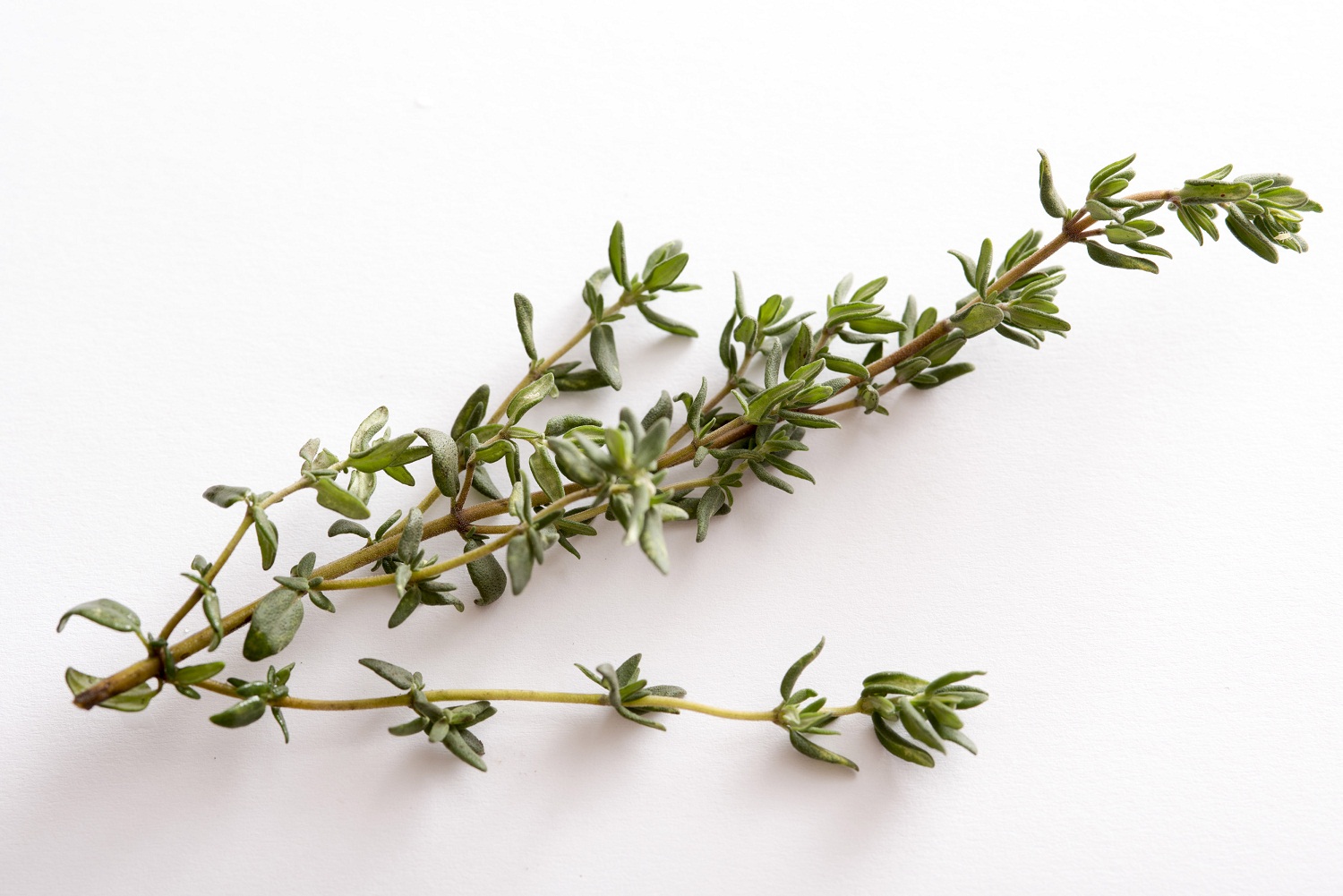


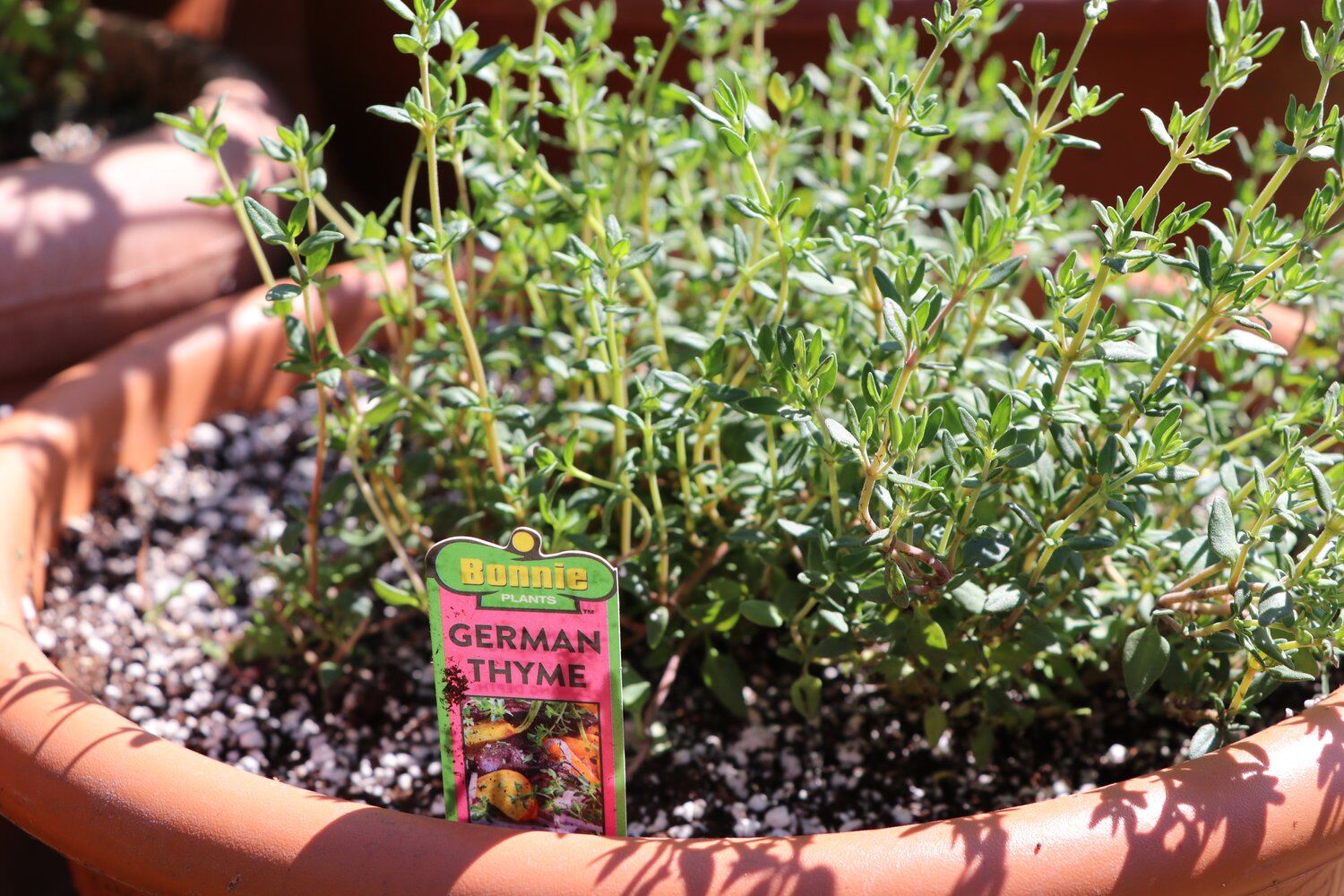
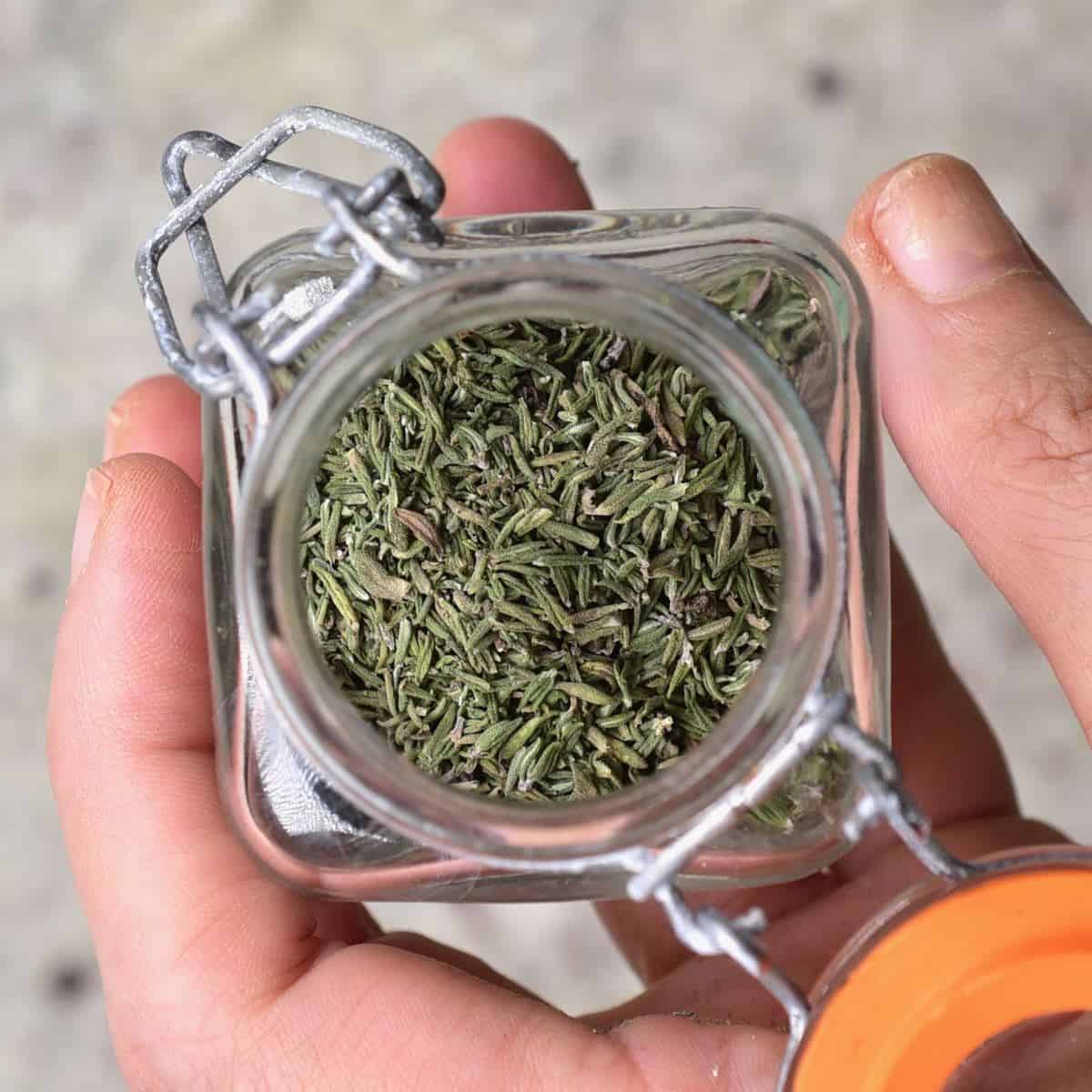



0 thoughts on “What Goes Well With Thyme”